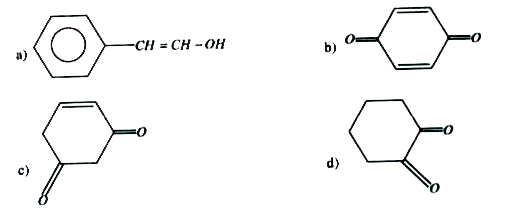The dissolution of ammonia gas in water does not obey Henry. s law. On dissolving , a major portion of ammonia molecules unite with H2O to form NH4OH molecules . A portion of the latter again dissociates into NH+4andOH− ions. In solution therefore , we have NH3 molecules, NH4OH molecules and NH+4 ions and the following equilibrium exist :
NH3(g) (pressure P and concentration c) ⇔NH3(i)+H2O⇔NH4OH⇔NH+4+OH− Let c1 mol//L of NH3 pass in liquid state which on dissolution in water forms c2mol/ L of NH4OH. The solution contains c3 mol/L of NH+4 ions.
The dissociation constant of NH4OH can be given as : Solution in Telugu
Kb=(c3)2(c2−c3)
Kb=(c3)2c2
Kb=c2(c2−c3)
Kb=c3(c1−c2)
The correct Answer is:A
Kb=[NH+4][OH−][NH4OH]=(C3)(C3)C2−C3
Topper's Solved these Questions
- BOOK - AAKASH SERIESCHAPTER - IONIC EQUILIBRIUM EXERCISE - PRACTICE SHEET (EXERCISE -II LEVEL -II (ADVANCED ) (Matrix Matching Type Questions))10videos
IONIC EQUILIBRIUM
- BOOK - AAKASH SERIESCHAPTER - IONIC EQUILIBRIUM EXERCISE - PRACTICE SHEET (EXERCISE -III LEVEL -I (MAIN) (Straight Objective Type Questions))26videos
IONIC EQUILIBRIUM
- BOOK - AAKASH SERIESCHAPTER - IONIC EQUILIBRIUM EXERCISE - PRACTICE SHEET (EXERCISE -II LEVEL -II (ADVANCED ) (More than one correct answer Type Questions))6videos
IONIC EQUILIBRIUM
- BOOK - AAKASH SERIESCHAPTER - HYDROGEN AND ITS COMPOUNDSEXERCISE - QUESTIONS FOR DESCRIPTIVE ANSWERS20videos
HYDROGEN AND ITS COMPOUNDS
- BOOK - AAKASH SERIESCHAPTER - ISOMERISM EXERCISE - ADDITIONAL PRACTICE EXERCISE ( PRACTICE SHEET (ADVANCED) INTEGER TYPE QUESTIONS)10videos
ISOMERISM
Similar Questions
List-IList-II(A)1×10−8M KOHP.pH=1.3(B)1×10−8MHBrQ.pH=6.95(C)1MHCI+1MNaOHR.pH=7.0414(D)0.02MH2SO4S.pH=7acidic solution
03:09View SolutionTo a buffer solution of CH3,COOH and CH3,COONa, some HCI is added. Then the reaction involved is
02:40View Solution100 ml of 0.1 M HCl and 100 ml of 0.1 M HOCN are mixed . What is the concentration of ..OCN−.., and pH of the solution ? (Ka=1.2×10−6)
03:53View SolutionWhy the use of hard water is disadvantages?
03:03View SolutionTautomerism is exhibited by X number of compounds among the following. What is X.
 03:53View Solution
03:53View SolutionCalculate equilibrium constant for NH3(aq.)+H2O⇔NH4+OH
if equilibrium constant for NH4OH+H⇔NH4+H2Ok1=1.8×109
Also 2H2O⇔H3O+OHK2=1×10−14at25∘C03:03View Solution(M)/(10)NH_4 OH Of ion is 10% (M)/(1000) NH_4OH The amount of ion of the solution will be
03:47View SolutionThe dissolution of ammonia gas in water does not obey Henry's law. On dissolving. a major portion of ammonia molecules unite with H2,O to form NH4,OH molecules. A portion of the latter again dissociates into NH+4, and OH− ions. In solution thercfore, we have NH3, molecules, NH4,OH molecules and NH+4, ions and the following equilibrium exist:
NH3(g) (pressure P and concentration c) →NH3(l)+H2,O→NH4,OH→NH+4→,+OH−
Let c1,mol/L of NH3, pass in liquid state which on dissolution in water forms c2 mol/ L of NH4,OH. The solution contains c3mol/L of NH+4, ions.
Total concentration of ammonia, which can be determined by volumetric analysis is equal to:02:48View SolutionThe dissolution of ammonia gas in water does not obey Henry's law. On dissolving. a major portion of ammonia molecules unite with H2,O to form NH4,OH molecules. A portion of the latter again dissociates into NH+4, and OH− ions. In solution thercfore, we have NH3, molecules, NH4,OH molecules and NH+4, ions and the following equilibrium exist:
NH3(g) (pressure P and concentration c) →NH3(l)+H2,O→NH4,OH→NH+4→,+OH−
Let c1,mol/L of NH3, pass in liquid state which on dissolution in water forms c2 mol/ L of NH4,OH. The solution contains c3mol/L of NH+4, ions.
Degree of dissociation of ammonium hydroxide isView SolutionThe dissolution of ammonia gas in water does not obey Henry's law. On dissolving. a major portion of ammonia molecules unite with H2,O to form NH4,OH molecules. A portion of the latter again dissociates into NH+4, and OH− ions. In solution thercfore, we have NH3, molecules, NH4,OH molecules and NH+4, ions and the following equilibrium exist:
NH3(g) (pressure P and concentration c) →NH3(l)+H2,O→NH4,OH→NH+4→,+OH−
Let c1,mol/L of NH3, pass in liquid state which on dissolution in water forms c2 mol/ L of NH4,OH. The solution contains c3mol/L of NH+4, ions.
Total concentration of ammonia, which can be determined by volumetric analysis is equal to:View SolutionThe dissolution of ammonia gas in water does not obey Henry's law. On dissolving. a major portion of ammonia molecules unite with H2,O to form NH4,OH molecules. A portion of the latter again dissociates into NH+4, and OH− ions. In solution thercfore, we have NH3, molecules, NH4,OH molecules and NH+4, ions and the following equilibrium exist:
NH3(g) (pressure P and concentration c) →NH3(l)+H2,O→NH4,OH→NH+4→,+OH−
Let c1,mol/L of NH3, pass in liquid state which on dissolution in water forms c2 mol/ L of NH4,OH. The solution contains c3mol/L of NH+4, ions.
Degree of dissociation of ammonium hydroxide is01:27View SolutionThe dissolution of ammonia gas in water does not obey Henry. s law. On dissolving , a major portion of ammonia molecules unite with H2O to form NH4OH molecules . A portion of the latter again dissociates into NH+4andOH− ions. In solution therefore , we have NH3 molecules, NH4OH molecules and NH+4 ions and the following equilibrium exist :
NH3(g) (pressure P and concentration c) ⇔NH3(i)+H2O⇔NH4OH⇔NH+4+OH− Let c1 mol//L of NH3 pass in liquid state which on dissolution in water forms c2mol/ L of NH4OH. The solution contains c3 mol/L of NH+4 ions.
The dissociation constant of NH4OH can be given as :01:41View SolutionWhy a precipitate of Mg(OH)_2 is not formed when aqueous ammonia, NH_4 OH is added to a solution of MgCl_2 ?
01:50View Solution(i)NH+4+H2O⇔NH3+H3O+ equilibrium constant = K1
(ii)NH3+H2O⇔NH+4+OH− equilibrium constant = K2
Than write reaction and equilibrium constant obtain by addition of these two reaction.01:41View SolutionAmmonia is a weak base that reacts with water according to the equation:NH3(aq)+H2O(I)<⇒NH4+(aq)+OH−(aq) . Which of the following conditions will decrease the moles of ammonium ion in water?
01:50View Solution

